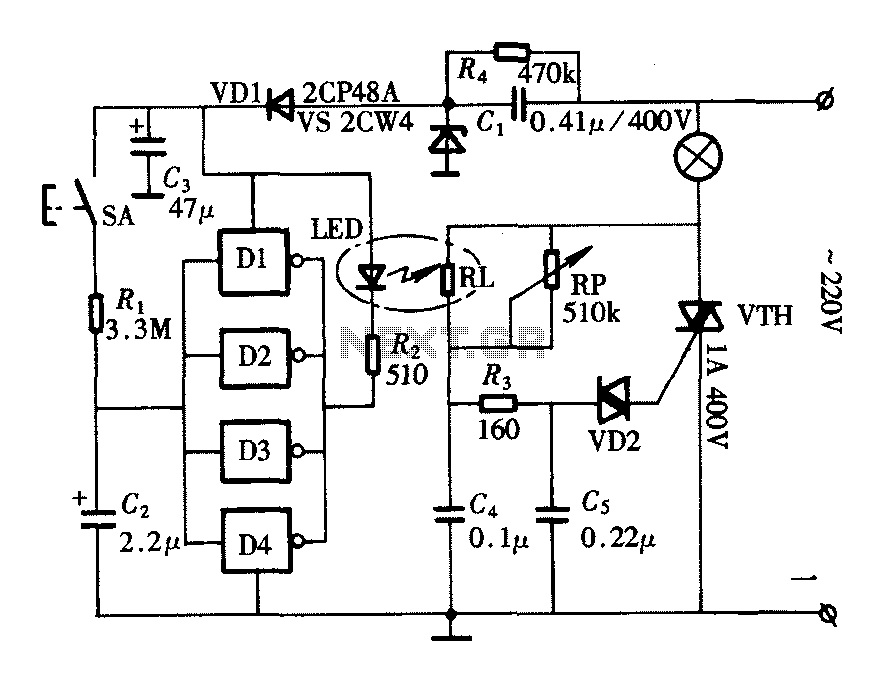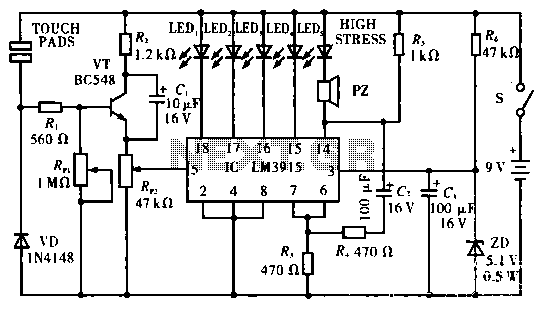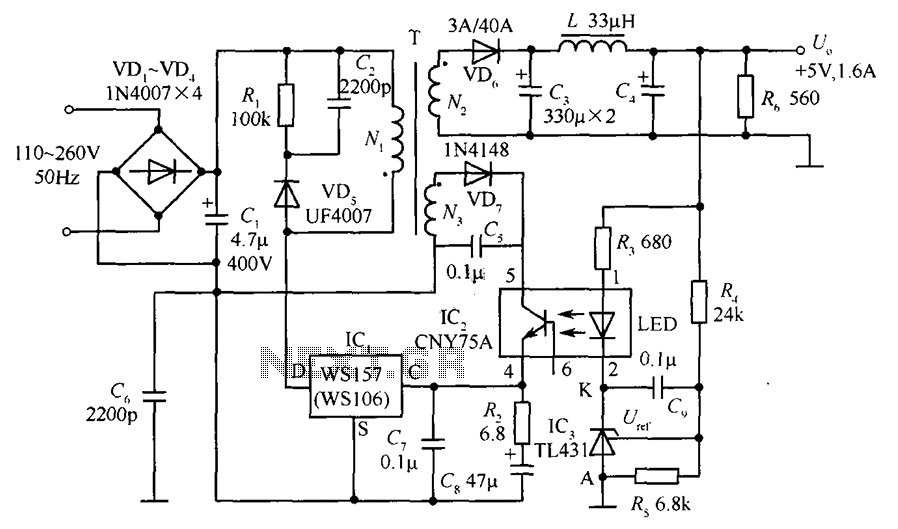
Fade or gradually eliminate style lighting controller circuit

The lighting controller depicted in the figure features a gradual dimming function that prevents sudden brightness changes, which can irritate the human eye and potentially cause damage due to inrush currents. The circuit design includes a six-stage CD4069 inverter configuration, which is complemented by a photo-coupler light-emitting diode driving circuit. To enhance the circuit's driving capability, four inverters are arranged in parallel.
The lighting controller circuit is designed to provide a smooth transition in light intensity, thereby minimizing abrupt changes that could lead to discomfort or harm. The use of a CD4069 inverter, known for its versatility in logic applications, allows for effective signal inversion and control within the circuit. The integration of a photo-coupler ensures electrical isolation between the control and load circuits, enhancing safety and performance.
The parallel arrangement of four inverters significantly increases the current handling capability of the circuit, making it suitable for driving higher power loads without compromising performance. This configuration effectively distributes the load across multiple inverters, reducing the risk of overheating and failure.
In practical applications, this lighting controller can be utilized in various environments, including residential lighting, stage lighting, and automotive lighting systems, where gradual illumination is preferred. The circuit's ability to manage inrush current effectively protects both the lamps and the associated circuitry, extending the lifespan of the components and improving overall reliability. This design not only enhances user comfort but also contributes to energy efficiency by allowing for controlled light output based on ambient conditions.As shown in FIG lighting controller with lights getting brighter gradually eliminate function, which can make the lights do not appear when the lights suddenly brighten the human eye irritation and damage the inrush current can be reduced when the lights may cause the lamp, circuit as shown in FIG. The circuit consists of a six-foot CD4069 inverter circuit composed of photo-coupler light emitting diode driving circuit, in order to enhance the driving ability of the circuit, four inverters in parallel. " alt="Fade, gradually eliminate style lighting controller circuit">
The lighting controller circuit is designed to provide a smooth transition in light intensity, thereby minimizing abrupt changes that could lead to discomfort or harm. The use of a CD4069 inverter, known for its versatility in logic applications, allows for effective signal inversion and control within the circuit. The integration of a photo-coupler ensures electrical isolation between the control and load circuits, enhancing safety and performance.
The parallel arrangement of four inverters significantly increases the current handling capability of the circuit, making it suitable for driving higher power loads without compromising performance. This configuration effectively distributes the load across multiple inverters, reducing the risk of overheating and failure.
In practical applications, this lighting controller can be utilized in various environments, including residential lighting, stage lighting, and automotive lighting systems, where gradual illumination is preferred. The circuit's ability to manage inrush current effectively protects both the lamps and the associated circuitry, extending the lifespan of the components and improving overall reliability. This design not only enhances user comfort but also contributes to energy efficiency by allowing for controlled light output based on ambient conditions.As shown in FIG lighting controller with lights getting brighter gradually eliminate function, which can make the lights do not appear when the lights suddenly brighten the human eye irritation and damage the inrush current can be reduced when the lights may cause the lamp, circuit as shown in FIG. The circuit consists of a six-foot CD4069 inverter circuit composed of photo-coupler light emitting diode driving circuit, in order to enhance the driving ability of the circuit, four inverters in parallel. " alt="Fade, gradually eliminate style lighting controller circuit">





